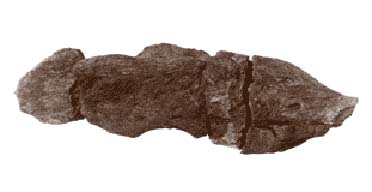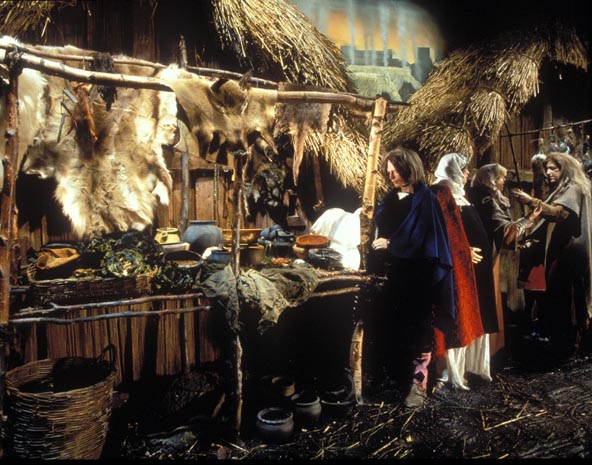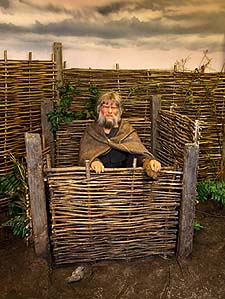Struggling for something to blog about this morning, I suddenly thought:
‘I know, I’ll do the biggest poo in history!’
Well… obviously I won’t do it personally. Talk about performance anxiety!
‘Yeah, is that the Guinness book of records? Can you send Norris McWhirta round, I’ve got a big job for him.’
No, no, no. Even if I did score a personal best, the Victorian invention of flushing has removed all but the most troublesome of floaters. Short of notifying the Coast Guard of the imminent danger to shipping, I’d be left with only a fisherman’s tale and a warm glow. That was until archaeology tore up the rulebook, and in the clearest indication yet that you don’t have to be mad to work here but it helps, invented a special branch of poo related science designed to record past accomplishments for posterity.
 Its received wisdom that you can’t polish a turd, but Paleoscatologists (ancient poo specialists) go bat-shit-crazy for anything bum related. Given enough time and a conducive burial environment, poo begins to fossilize, changing its name in the process to a more scientifically respectable ‘coprolite.’ The biggest recorded coprolite was found in 1972 by archaeologists excavating the Viking settlement of Jórvík (now York) in northern England. It was found beneath the York branch of what would come to be Lloyds Bank, and as deposits go, this bad boy paid out with interest. At nine-inches (23 cm) long, it is the largest example of fossilised human feces ever found, and a gold mine of information about its one time owner.
Its received wisdom that you can’t polish a turd, but Paleoscatologists (ancient poo specialists) go bat-shit-crazy for anything bum related. Given enough time and a conducive burial environment, poo begins to fossilize, changing its name in the process to a more scientifically respectable ‘coprolite.’ The biggest recorded coprolite was found in 1972 by archaeologists excavating the Viking settlement of Jórvík (now York) in northern England. It was found beneath the York branch of what would come to be Lloyds Bank, and as deposits go, this bad boy paid out with interest. At nine-inches (23 cm) long, it is the largest example of fossilised human feces ever found, and a gold mine of information about its one time owner.

By subjecting the weighty specimen to a barrage of scientific tests, archaeologists can tell that the individual lived on a diet of meat and bread and was riddled with parasitic worms. Paleo-scatman Andrew Jones (Ski Ba Bop Ba Dop Bop) described the coprolite as the most “exciting piece of excrement I’ve ever seen. In its own way, it’s as valuable as the Crown Jewels.” Proof if proof were needed that archaeologists operate within an entirely different  value system to the rest of the universe. In fact the priceless poo is one of York Museum’s most treasured possessions, and is now on permanent display in the newly revamped Jórvík Viking Centre. Reveling in the stink of daily life circa 800AD, the centre has delighted school kids by the busload, even using the coprolite as the basis for a life-sized animatronic reconstruction of a Viking townsman squatting above a latrine mid-grimace.
value system to the rest of the universe. In fact the priceless poo is one of York Museum’s most treasured possessions, and is now on permanent display in the newly revamped Jórvík Viking Centre. Reveling in the stink of daily life circa 800AD, the centre has delighted school kids by the busload, even using the coprolite as the basis for a life-sized animatronic reconstruction of a Viking townsman squatting above a latrine mid-grimace.
But in 2003, The Lloyds Bank Coprolite came to a sticky end. Carefully removing the prized poo from the display case for a special party of VIP’s, a hapless curator lost control of his faculties, and the Loyds Bank Coprolite dropped to the floor. It smashed into three pieces, and by all accounts there followed a deafening silence whilst the enormity of the damage sank in. Can you guess he said next?
SSSSHHHHHH…………..!!!!!!!!!






